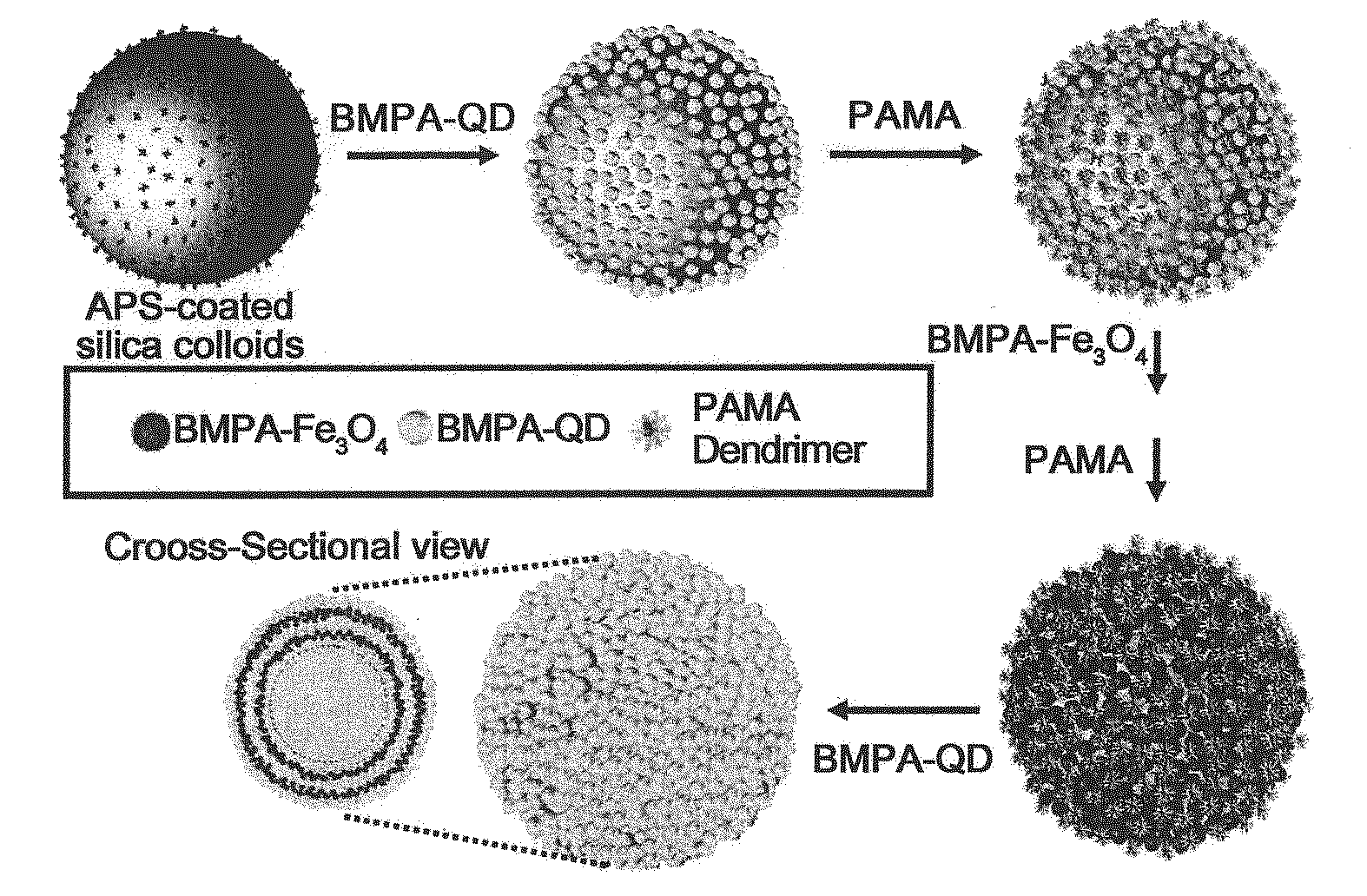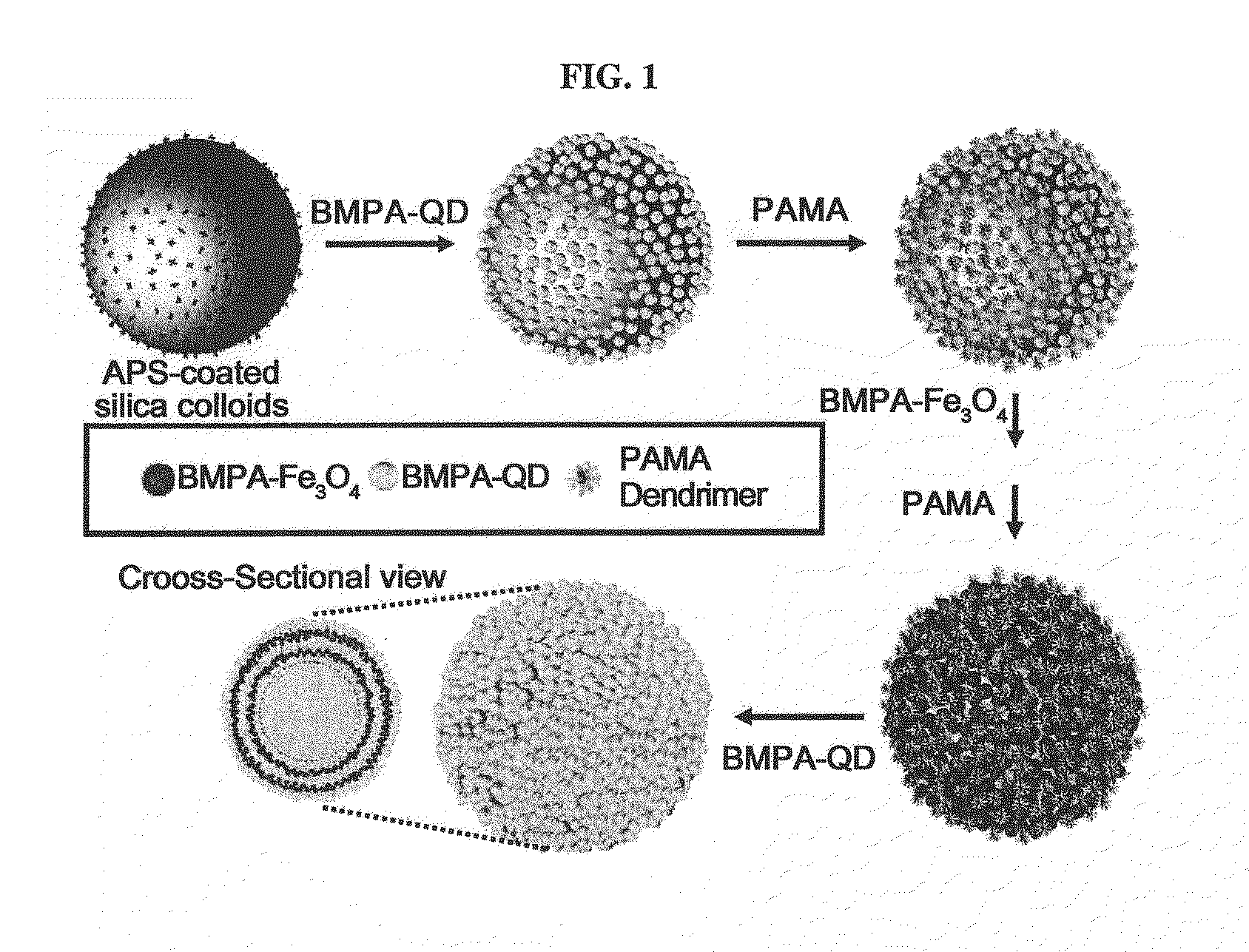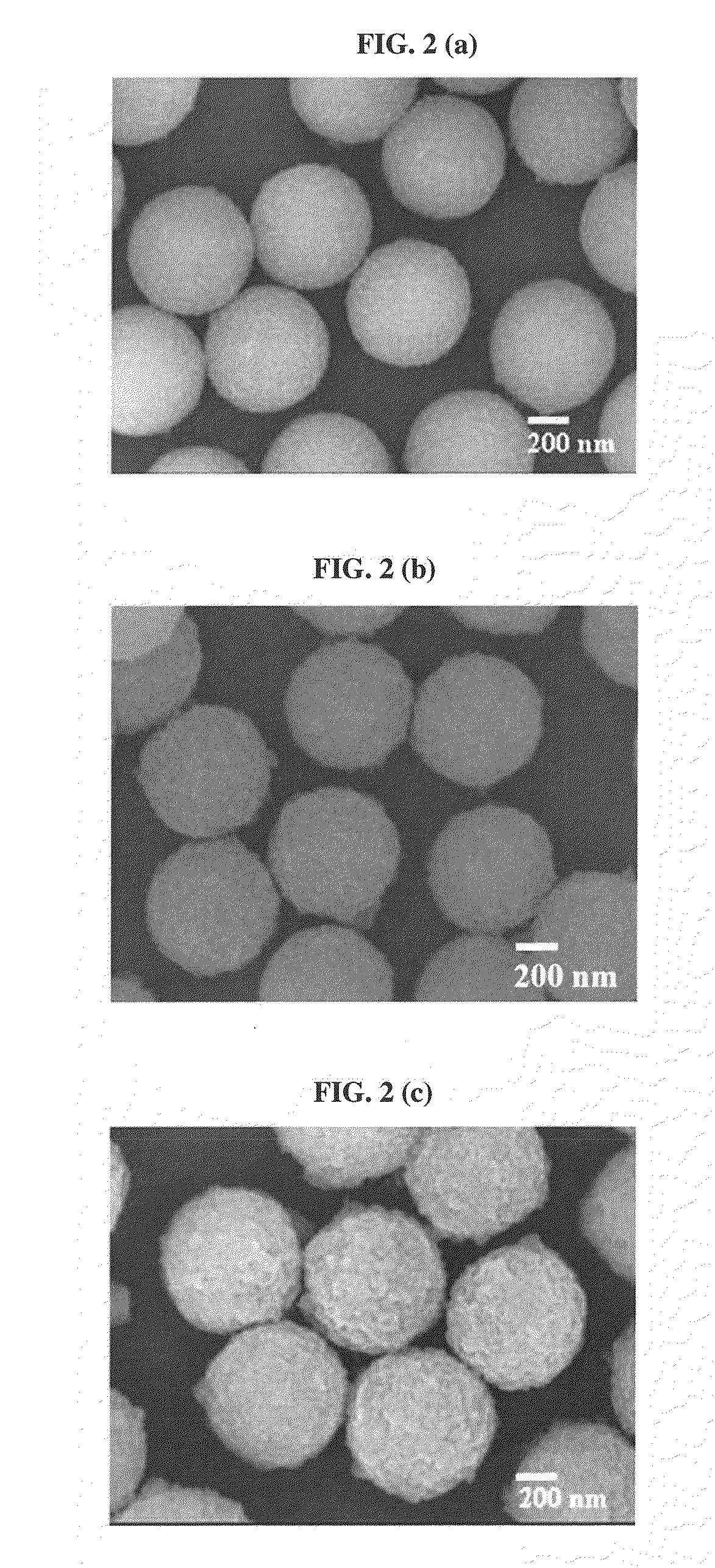Multifunctional colloid NANO composite derived from nucleophilic substitution-induced layer-by-layer assembly in organic media and fabrication of the same
a nanocomposite and colloidal technology, applied in the direction of magnetic paints, magnetic bodies, organic/organic metal materials magnetism, etc., can solve the problems of low packing density of each component layer, difficult use of sol-gel methods in the design of structurally and compositionally complex nanocomposites using organic solution processes, and inability to use approaches in aqueous media, etc., to achieve good superhydrophobicity, strong magnetic and photoluminescent properties, and high crystallinity functional
- Summary
- Abstract
- Description
- Claims
- Application Information
AI Technical Summary
Benefits of technology
Problems solved by technology
Method used
Image
Examples
example 1
Preparative Example 1
Preparation of BMPA-Stabilized Photoluminescent Quantum Dot Nanoparticles
[0042]In the case of photoluminescent QDs (CdSe / ZnS), 38.5 mg of CdO, 700 mg of zinc acetate, 17.6 mL of oleic acid, and 15 mL of 1-octadecene were put into a 250 mL round flask. The mixture was heated to 150° C. with N2 gas blowing and further heated to 300° C. to form a clear solution of Cd(OA)2 and Zn(OA)2. At this temperature, 31 mg of Se powder and 128.2 mg of S powder both dissolved in 2 mL of trioctylphosphine were quickly injected into the reaction flask. After the injection, the temperature of the reaction flask was set to 300° C. for promoting the growth of QDs, and it was then cooled to room temperature to stop the growth. QDs were purified by adding 20 mL of chloroform and an excess amount of acetone (3 times).
[0043]After this purification, 3.34 wt % of BMPA was added to 40 mL QD solution for the stabilizer exchange from oleic acid to BMPA and then was heated at 40° C. for 2 h t...
example 2
Preparative Example 2
Preparation of BMPA-Stabilized Iron Oxide Nanoparticles
[0045]Oleic acid-stabilized Fe3O4 of about 12 nm size was synthesized in toluene. BMPA (1.336 g, 8 mmol) was added to 40 mL of Fe3O4 solution for the stabilizer exchange from oleic acid to BMPA and then was heated at 40° C. for 2 h to prepare BMPA-Fe3O4.
example 3
Preparative Example 3
Buildup of Nanoparticle Multilayers by Nucleophilic Reaction-Based Layer-by-Layer Assembly
[0047]The concentration of PAMA, BMPA-QD, and BMPA-Fe3O4 solutions was fixed to 1 mg / mL in organic media (ethanol for PAMA and toluene for BMPA-Fe3O4).
[0048](1) First, 100 mL of a concentrated dispersion (6.4 wt %) of negatively charged 600 nm silica colloids was diluted to 0.5 mL with deionized water. After fast centrifugation (8000 rpm, 5 min) of colloidal solution, supernatant water was removed, and then 1 mg / mL of aminopropyltrimethoxysilane (APS) ethanol solution was added to silica colloidal sediment followed by ultrasonication and sufficient adsorption time. Excess APS was removed by three centrifugations (8000 rpm, 5 min) / wash cycles to prepare APS-coated silica colloids.
[0049](2) For the preparation of multilayers onto APS silica colloids, 0.5 mL of BMPA-QD (or BMPA-Fe3O4) (1 mg / mL) in toluene was added, and after deposition during 10 min, the excess BMPA-QD (or BM...
PUM
| Property | Measurement | Unit |
|---|---|---|
| Crystallinity | aaaaa | aaaaa |
| Photoluminescence | aaaaa | aaaaa |
| Stability | aaaaa | aaaaa |
Abstract
Description
Claims
Application Information
 Login to View More
Login to View More - R&D
- Intellectual Property
- Life Sciences
- Materials
- Tech Scout
- Unparalleled Data Quality
- Higher Quality Content
- 60% Fewer Hallucinations
Browse by: Latest US Patents, China's latest patents, Technical Efficacy Thesaurus, Application Domain, Technology Topic, Popular Technical Reports.
© 2025 PatSnap. All rights reserved.Legal|Privacy policy|Modern Slavery Act Transparency Statement|Sitemap|About US| Contact US: help@patsnap.com



